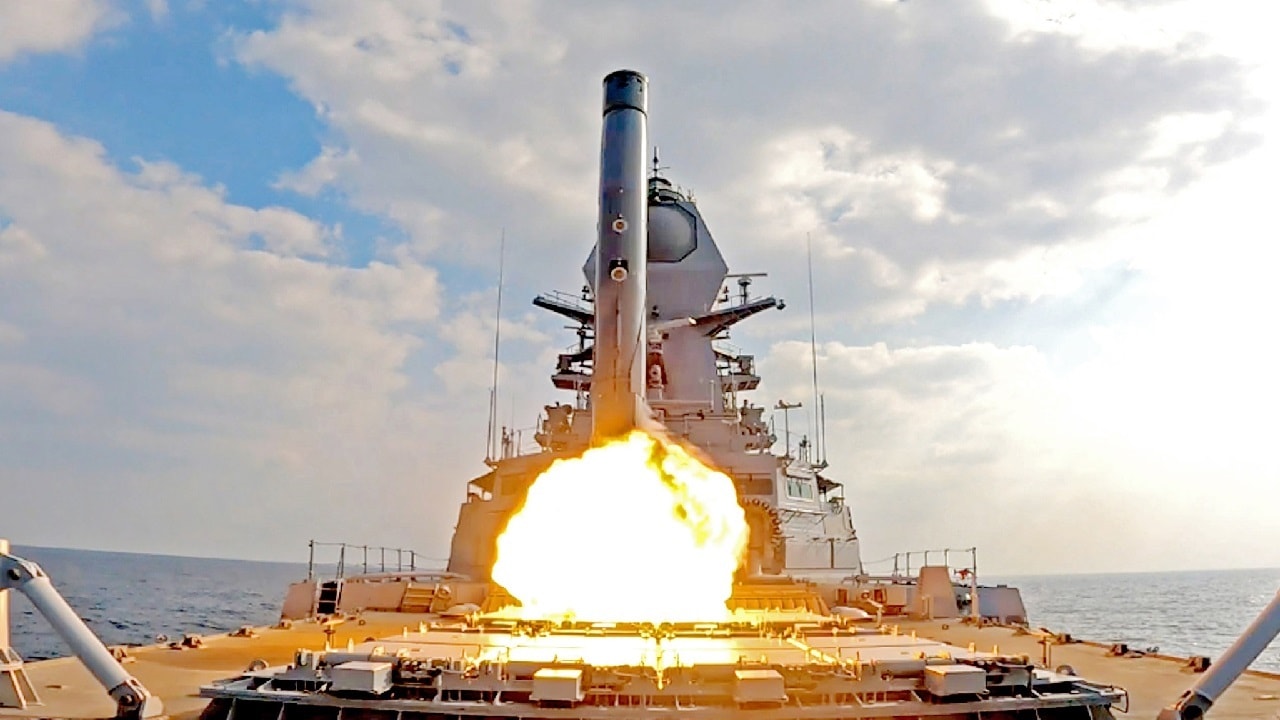The BrahMos cruise missile is the product of a joint Indian and Russian defense project. It makes for an awkward pairing, given Russia’s newly earned pariah status, but Russia and India share close ties when it comes to arms development, and the BrahMos is one of the relationship’s most significant outcomes.
BrahMos: A Unique Joint Venture
The BrahMos is one of the fastest cruise missiles in the world, and India’s army believes it is accurate out to 280 miles or more.
The missile just completed a successful test on Nov. 29 on the Andaman and Nicobar Islands, an Indian territory at the confluence of the Bay of Bengal and the Andaman Sea. The latest test is a culmination of several evaluation flights on the islands that the Indian military has overseen this year.
The BrahMos is based on the Russian P-800 Oniks missile, and the supersonic cruise missile has a speed of Mach-2.8. The BrahMos is versatile – there are land-attack, air-launched, submarine-launched, and anti-ship variants, and the missile can carry conventional and nuclear warheads.
Its name is a compound abbreviation of India’s Brahmaputra River and Russia’s Moskva River, thus spelling out the partnership between the two countries.
The missile is the product of a joint venture between India’s Defense Research and Development Organization and Russia’s NPO Mashinostroyeniya, who joined to create an entity called BrahMos Aerospace.
The program has been chugging along since its first test launch in 2001, and it entered service with the Indian navy in 2005. Now the army and air force have been supplied with the missile.
On a Path to Hypersonic?
The missile has two stages. The solid-fueled first stage brings the missile to supersonic speed, and the second stage uses a liquid-fueled ramjet to reach Mach-2.8. The manufacturer claims the cruise missile cannot be shot down by adversarial air defense systems.
Even a close-in weapons system could have trouble against the BrahMos.
The BrahMos is 30 feet long, with a diameter of 2 feet.
Its conventional warhead weighs at least 440 pounds. It has a satellite guidance system, and it can be launched as a fire-and-forget munition that makes its own adjustments on its way to the target.
In the land-attack version, three missiles are carried on a launcher transported by a 12X12 truck with a three-man crew. Airplanes and ships can also fire it.
The missile’s cruising altitude is 9 miles, and it can swoop to as low as 30 feet in its terminal phase.
BrahMos Aerospace believes that the cruise missile has far more velocity, flight range, seeker range, and kinetic energy than competing subsonic models.
Designers believe the BrahMos could someday be a hypersonic weapon. This would require replacing the ramjet engine with a scramjet.
The Limits of Geopolitics
India wants to make the BrahMos a key export product, and there has been some interest.
The Philippines signed a $368 million deal in January to buy the missile system, making Manila the first buyer.
Vietnam and other Southeast Asian militaries are reportedly interested in the BrahMos. However, its Russian parts could mean that sales afoul of the U.S. Countering America’s Adversaries Through Sanctions Act, and this could severely hamper sales.
There are no reports so far to indicate Russia might pursue a transfer of the weapon to Moscow, allowing it to deploy the missile in Ukraine. But Russia is desperate for missiles, and the BrahMos would be a valuable addition to its dwindling stocks.
Russia could use all variants – land attack, air-launched, and ship-launched. Producing more of the missiles could be difficult for India as it adapts to U.S. sanctions on Russian missile parts. Russia supplies 65% of the components, and India wants to make at least 80 per year. They may find in this geopolitical environment that they produce substantially less.
Expert Biography: Serving as 1945’s Defense and National Security Editor, Dr. Brent M. Eastwood is the author of Humans, Machines, and Data: Future Trends in Warfare. He is an Emerging Threats expert and former U.S. Army Infantry officer. You can follow him on Twitter @BMEastwood. He holds a Ph.D. in Political Science and Foreign Policy/ International Relations.

